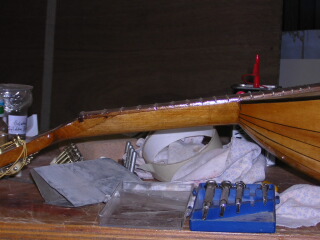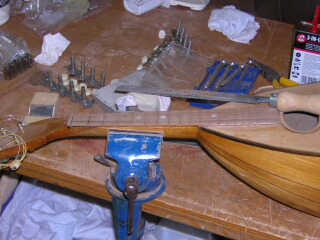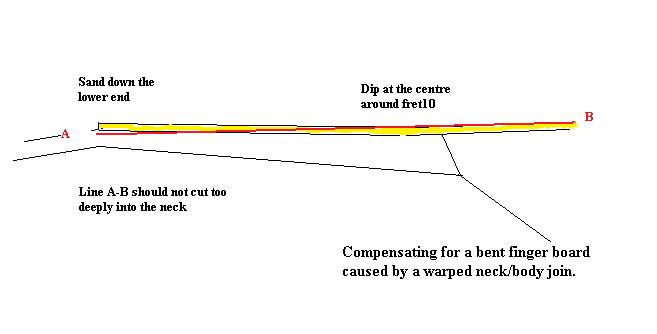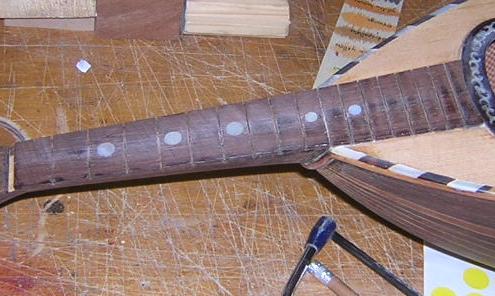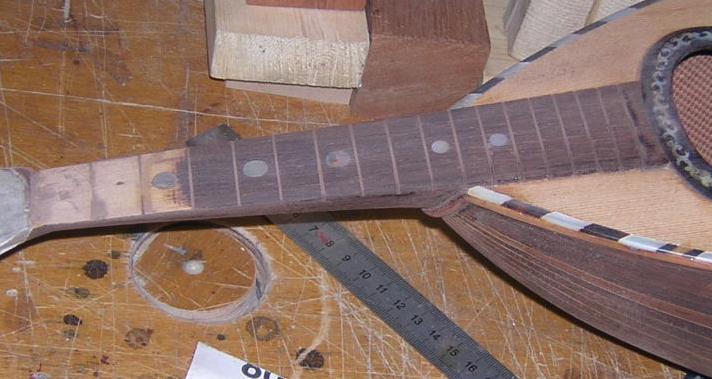| Fitting a Shim |
| The reason for fitting a shim, is
to raise the level of the board, particularly the bridge end, to give us a
better bridge height. It is often the preferable alternative to completely
re-setting the neck.... not easy on a bowl back. There are various
problems that must be considered when doing this............... |
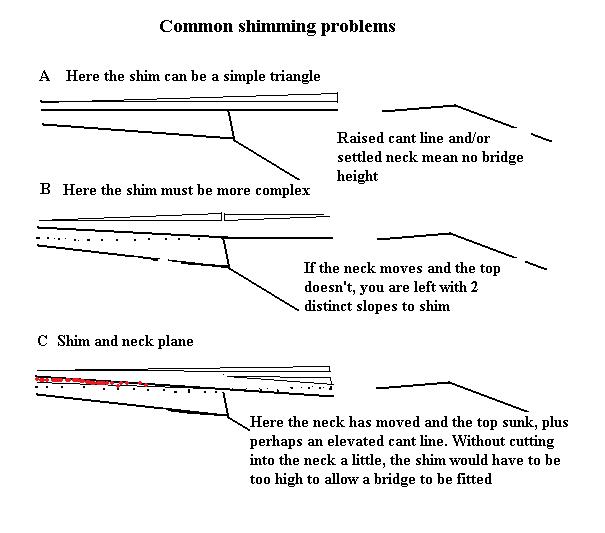 |
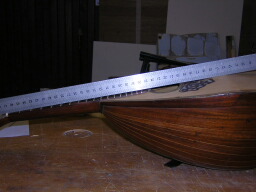 |
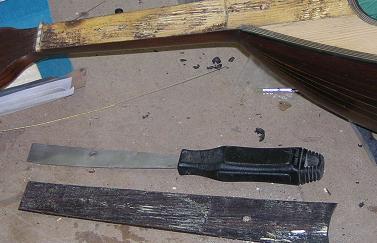 |
 |
| Here I have set up a steel rule, to
demonstrate the method I use to check potential bridge height. Often the
rule will rest on fret one and the bridge position, and not touch any
other frets. You must have a space under the ruler to be
able to fit a bridge. |
The first task is to remove the
fingerboard, with as little damage to board and neck as possible. Here it
has come away cleanly, but the old Italian bowls particularly, where
fingerboards are often very thin, have a tendency to break into pieces or
even crumble. |
Here an Italian fingerboard is being rebuilt
piece by piece on to a piece of rosewood, which will later form the shim,
after falling apart during removal. Sometimes this is inevitable, as the
fret-slots on thin boards often cut right through the board. |
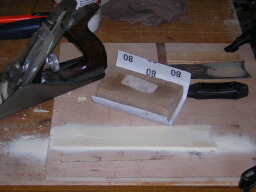 |
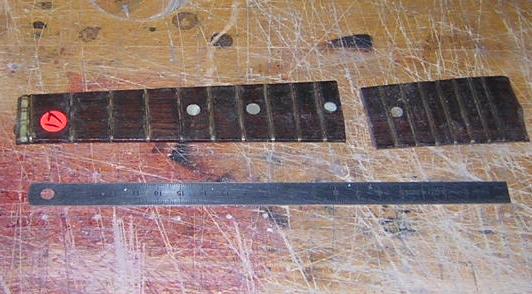 |
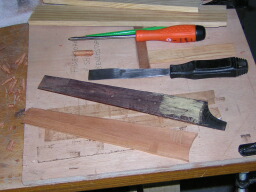 |
| In order to bring the instrument back to
playability, a 'shim' needs to be fitted beneath the fingerboard to even
out any dip and raise the sound-hole end, allowing some room for the
fitting of a bridge. Often both ends of the 'shim' will need to be
carefully tapered before gluing. |
Another problem especially with Italian
finger boards, is that they are often not of a uniform thickness. This one
is about 3mm at the nut but only 2mm at fret 10. |
The material depends on that
used to make the neck, here a mahogany 'shim' is being made to fit a
mahogany neck, but I make from maple, ebony and rosewood. |
 |
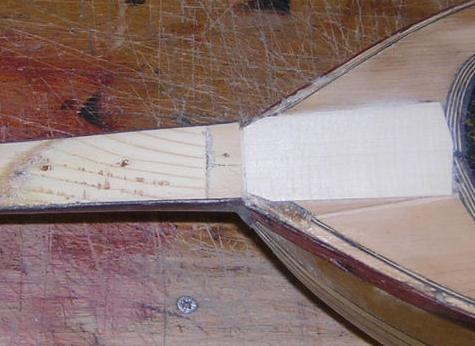 |
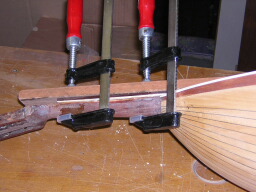 |
| I sometimes glue the 'shim' to the neck
first, but more often to the fingerboard, especially if it is a simple
triangle. That way it
is possible to keep the fingerboard top flat and level. Here a rosewood 'shim' is being glued to a rosewood
fingerboard, and the edges sanded level.
|
Here a half shim is glued to the mandolin
first, and brought to a level surface afterwards, by sanding. |
When the fingerboard and/or 'shim' are finally glued back into position, they are clamped to a
straight edge to keep everything level. The presence of the 'shim' will
help the neck maintain its position on the laminate principle. |
| NB. It doesn't make
any difference if you glue the shim to the fingerboard or the
mandolin, once the fingerboard is re-glued it is very likely
that you will have to either level the frets, or even re-level
the board. This is especially the case with Italian instruments,
as I am led to suppose that they were glued in place first, and then
levelled, thus evening out any inconsistencies in the neck mounting. Fret
slots would then be cut and frets fitted. This would explain why there are
often cuts in the neck when the f/b is removed, and why the f/b is often
not of a uniform thickness. |
